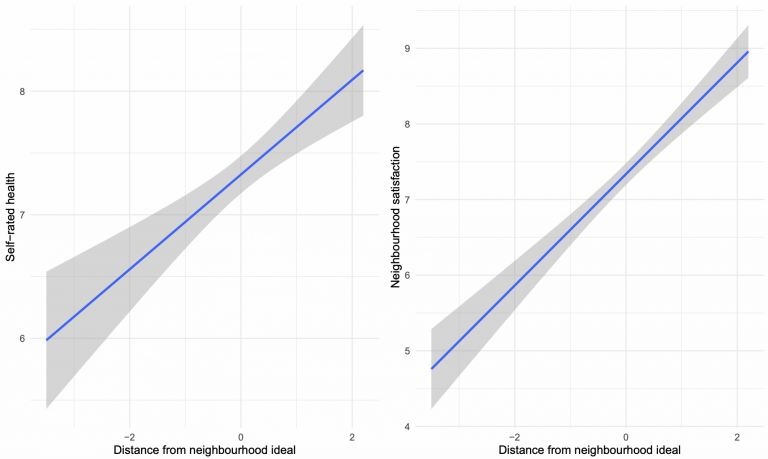
Recommendations for Better Policy
The resident priorities we identify show strong connections to the social determinants of health: they are social conditions that tend to affect individuals’ health outcomes, whether physical or psychological. And while many of these priorities may seem familiar to the priorities urbanists refer to with concepts like ‘complete communities,’ we also observed that many in our study approached these qualities from a distinctly ‘inner-suburban perspective.’ For example, stores and amenities in strip malls, a built form not usually associated with walkability or convenience, were noted by many residents as being very accessible to them. Similarly, while respondents overall displayed a traditional suburban aversion to “downtown” living in which apartments predominate, they also showed substantial openness to living in neighbourhoods with a mix of houses, apartments, and condominiums.
Because neighbourhood-oriented health policies are implemented by governments that depend on local support and uptake to be effective, we also sought to discover residents’ views about the role of government at the neighbourhood level. Notably absent in these conversations were references to political ideology or more abstract concepts of government. Our sample of residents viewed government in highly concrete ways; for example, stressing the importance of maintenance and upkeep of infrastructure and of elected leaders being visible in their communities.
We examined the individual- and neighbourhood-level factors that may help explain resident priorities and perspectives. We found that homeownership, age, family composition, living in a mixed income neighbourhood, class, immigration, and race helped explain experiences and responses more than simply where an individual lived within a neighbourhood. To codify this mix of experiences and attributes, we present five clusters of survey respondents. These individuals shared demographic features and tended to respond in similar ways to our questions, suggesting that these clusters represent distinct perspectives and worldviews grounded in these shared characteristics.
Community Voices suggests an agenda for addressing inequality in standing in Toronto. In particular, our study reveals ways for policy-makers to incorporate the voices, interests, views, and aspirations of the City’s inner suburban communities as part of their routine deliberations. To this end, we stress that resident perceptions are worth taking seriously in their own right. Residents who perceive their neighbourhood falls short of their ideal report substantially lower levels of well-being. Tangible efforts to close the gap between perception and reality are vital.
This figure shows that residents who live in neighbourhoods’ that fall short of their ideal enjoy substantially lower levels of satisfaction and self-rated health, compared to otherwise similar residents who live in a neighbourhood that aligns with their ideal. To measure residents’ distance to their ideal neighbourhood, we conducted a survey experiment, more details about which can be found in our discussion of resident values.
 We believe it is possible to improve the standing of inner-suburban neighbourhoods in urban policy discussions:
We believe it is possible to improve the standing of inner-suburban neighbourhoods in urban policy discussions:
- Focus on the assets that exist within these communities;
- Instead of chasing an idealised downtown Toronto centric vision of a healthy community, respect the lifestyle choices and different understandings of concepts like walkability which local residents may have
- Short-term: Prioritise tangible, attainable improvements to buildings, roads and the public realm
- Long-term: Focus on making these communities more complete neighbourhoods by increasing access to core local services and amenities neighbours prioritise, rather than re-engineering them from scratch.
9 more specific recommendations emerged from repeated themes encountered over the study:
- Safety first. Prioritise measures to make residents feel safe in their communities with a focus on pedestrian safety and traffic control, and reducing gun violence.
- Maintenance matters. Take maintenance of roads, buildings and public spaces seriously as a condition for almost any other successful policy initiative.
- Palaces of the people. Invest in libraries and community centres.
- Mental health support as core local service. Consider urgent investments in locally accessible mental health services
- Increase awareness of available services. Support increased investment in connecting newcomers to services.
- Increase frequency and quality of buses. More than mass transit residents spoke about the need to improve current bus journey’s.
- Increase investment in social services and upkeep within Toronto Community Housing.
- Show you care. Create more accessible lines of communication with the city and elected leaders.
- Political boundaries are largely invisible to ordinary citizens. Avoid building policy off of official city or neighbourhood boundaries.





